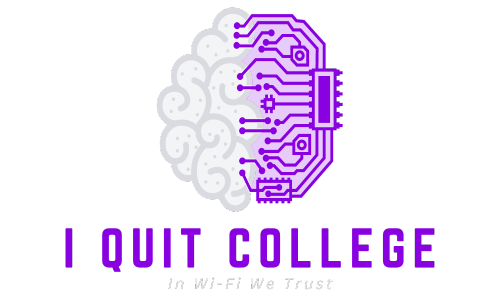Google rankings are crucial for the visibility and success of your website. When you appear higher in Google search results, you attract more organic traffic and increase your chances of reaching your target audience. To improve your Google rankings, it’s important to implement effective strategies that align with Google’s ranking factors.
In this article, we will explore actionable tips and techniques to boost your website’s visibility and secure higher Google rankings. By following these strategies, you can optimize your website for better performance and outshine your competitors in the search engine results pages.
Key Takeaways:
- Improving your Google rankings is essential for attracting organic traffic and increasing your website’s visibility.
- Implementing effective strategies that align with Google’s ranking factors can help boost your rankings.
- Optimizing your on-site SEO, understanding search intent, and monitoring technical SEO are key steps in improving Google rankings.
- Regularly tracking and monitoring your results is important to measure the effectiveness of your efforts.
- Crafting high-quality content that fulfills user search intent can greatly improve your Google rankings.
Understanding Google Ranking and its Importance
Google’s ranking metrics are designed to sort through billions of web pages and provide users with the most relevant and useful results. Ranking high on Google can significantly impact your website’s visibility and attract valuable organic traffic.
“Google’s mission is to organize the world’s information and make it universally accessible and useful.”
When users search for a specific query or keyword, Google’s algorithms analyze numerous factors to determine the most relevant web pages. These factors, known as Google ranking factors, include:
- The relevance of the content to the search query
- The quality and authority of the website
- The user experience and website usability
- The loading speed and mobile-friendliness of the website
- The number and quality of backlinks
- The user engagement metrics, such as click-through rates and bounce rates
- The social signals and mentions of the website on social media
Understanding these Google ranking factors and optimizing your website accordingly is essential for achieving higher Google rankings and driving more organic traffic. By aligning your website with these factors, you can provide a better user experience and increase your chances of appearing at the top of Google’s search results.
Organic Google Rankings
Organic Google rankings refer to the positions your website occupies in the search results based on its relevance and authority, without any paid promotion or advertising.
Achieving high organic Google rankings is highly valuable as it allows you to attract targeted traffic without incurring additional costs. To improve your organic rankings, focus on creating high-quality content, optimizing your website for search engines, and building a strong online presence through ethical SEO practices.
The Impact of Google Rankings on Your Website
Ranking higher on Google can have several significant benefits for your website:
- Increased visibility: Higher rankings mean more visibility for your website on Google’s search results page, leading to increased exposure to potential customers.
- Greater organic traffic: Higher rankings attract more organic traffic, as users are more likely to click on websites that appear at the top of the search results.
- Better credibility and authority: Ranking high on Google enhances your website’s credibility and authority in the eyes of users, as they perceive top-ranked websites as more trustworthy and reliable.
- More conversions and revenue: With increased visibility and traffic, your website has a better chance of converting visitors into customers, leading to higher sales and revenue.
By prioritizing your Google rankings and implementing effective SEO strategies, you can unlock the full potential of your website and achieve sustainable online success.
Step-by-Step Guide to Improve Google Rankings
Improving your Google rankings involves a series of strategic steps that can boost your website’s visibility and attract more organic traffic. By implementing these techniques, you can increase your Google rankings, improve your online presence, and reach a wider audience. Let’s dive into the actionable tips to enhance your website’s performance in search engine results:
1. Optimize Your On-Site SEO
On-site SEO plays a crucial role in improving Google rankings. Ensure that your website’s structure, meta tags, title tags, and headings are optimized for relevant keywords. Incorporate your target keywords naturally throughout your content, and make sure to frontload your main keyword in the title tag. By taking these steps, you can signal to Google the relevance and value of your content.
2. Incorporate LSI Keywords
LSI (Latent Semantic Indexing) keywords are related terms or phrases that provide context to search engines. By incorporating LSI keywords naturally within your content, you can improve your website’s relevance and increase the chances of ranking for a wider range of related search queries. Conduct keyword research to identify LSI keywords and strategically incorporate them into your content.
3. Monitor Your Technical SEO
Technical SEO involves optimizing the technical aspects of your website to enhance its performance. Regularly check your website’s mobile-friendliness, page loading speed, and index status in the Google Search Console. Ensure that your website is mobile-optimized, has a fast loading speed, and is easily accessible for search engine crawlers. This will improve your user experience and boost your Google rankings.
4. Match Your Content to Search Intent
Understanding user search intent is crucial for crafting content that aligns with what users are looking for. Analyze the search results for your target keyword and identify the type of content that ranks highly. Create valuable, informative content that satisfies user queries and fulfills search intent. By doing so, you can increase user engagement, reduce bounce rate, and improve your overall Google rankings.
5. Reduce Bounce Rate
Bounce rate refers to the percentage of visitors who leave your website after viewing only one page. High bounce rates can negatively impact your Google rankings. To reduce bounce rate, ensure that your content is engaging, relevant, and delivers on the promises made in the search results. Improve user experience by optimizing page load times, enhancing navigation, and providing valuable content that encourages visitors to explore further.
6. Find New Keywords to Target
Continuously conduct keyword research to discover new keyword opportunities for your content. Look for relevant keywords with high search volumes and low competition. Incorporate these keywords naturally into your content to expand your visibility and attract a broader audience. By targeting a diverse range of keywords, you can increase your chances of ranking higher in Google search results.
7. Publish High-Quality Content
Create and publish content of the highest possible quality. Craft well-researched, informative articles that provide value to your audience. Optimize your content with relevant keywords, incorporate visuals, and use a clear and engaging writing style. By consistently publishing high-quality content, you can attract more organic traffic, increase user engagement, and improve your Google rankings.
8. Build Backlinks from Reputable Sources
Building backlinks from reputable websites is an effective way to improve your Google rankings. Seek opportunities to acquire backlinks from relevant, authoritative sites in your industry. Guest blogging, creating shareable content, and reaching out to influencers can help you earn valuable backlinks. Remember, quality is more important than quantity when it comes to backlinks.
9. Track and Monitor Your Results
Tracking and monitoring the results of your efforts is crucial to measure the effectiveness of your strategies. Use analytics tools, such as Google Analytics, to track changes in your website’s rankings, organic traffic, and user behavior. Analyze the data to identify areas for improvement and make informed decisions to further optimize your website for better Google rankings.
By following these step-by-step guidelines, you can improve your Google rankings, increase website visibility, and attract more organic traffic. Implement a well-rounded SEO strategy that encompasses on-site optimization, content relevance, technical SEO, and continuous monitoring of your performance. Stay consistent, adapt to changes in search algorithms, and refine your strategies to achieve long-term success in improving your Google rankings.
Enhancing On-Site SEO for Better Rankings
When it comes to improving your Google rankings, on-site SEO plays a significant role. By optimizing various elements on your website, you can enhance its visibility and attract more organic traffic. Let’s explore some essential on-site tactics that can help boost your Google rankings:
1. Optimize Your Website’s Structure
Having a well-structured website is crucial for both search engines and users. Ensure that your site has a clear hierarchy, with important pages easily accessible from the main navigation menu. By organizing your content effectively, you can improve user experience and increase the chances of ranking higher on Google.
2. Fine-Tune Your Meta Tags and Title Tags
Meta tags and title tags provide essential information about your web pages to search engines. Optimize these tags by incorporating relevant keywords that accurately reflect the content of each page. Including your target keyword at the beginning of the title tag can also improve your chances of ranking higher in search results.
3. Utilize the Power of Headings
Headings (H1, H2, H3, etc.) not only help structure your content but also provide valuable signals to search engines. Incorporate your target keywords in headings to indicate the relevance of your content. However, ensure that your headings are used logically and provide a clear flow to enhance readability for both users and search engines.
4. Create Long-Form Content
Long-form content tends to perform better in search engine rankings. This is because it allows you to provide comprehensive and in-depth information about a topic, making your content more valuable to readers. Aim for content that is informative, engaging, and relevant to your target audience.
5. Strategically Place Keywords Throughout the Page
While it’s important to include your target keywords in your content, it’s also crucial to use them strategically. Avoid keyword stuffing, as this can negatively impact your rankings. Instead, focus on natural language and incorporate keywords in a way that flows naturally within the context of your content.
6. Leverage Latent Semantic Indexing (LSI) Keywords
LSI keywords are terms and phrases that are closely related to your target keyword. By incorporating LSI keywords within your content, you can provide more context and relevance to search engines. This helps search engines understand the topic of your page better, ultimately leading to improved rankings.
Did you know? Frontloading your target keyword in the title tag and strategically placing it throughout the page can help Google understand the focus of your content and improve your rankings.
By implementing these on-site SEO strategies, you can enhance your website’s visibility and improve your Google rankings. Remember to monitor your performance and adapt your approach based on the results you see. Now, let’s move on to the next section to discover how to monitor your website’s technical SEO for optimal rankings.
Monitoring Technical SEO for Optimal Rankings
Technical SEO plays a crucial role in improving your website’s visibility and ensuring a seamless user experience. By optimizing various technical aspects of your site, you can enhance your chances of securing higher Google rankings and attracting more organic traffic.
Factors to Consider in Technical SEO
When it comes to technical SEO, there are several key factors that you should monitor and optimize:
- Mobile Optimization: With the majority of internet users accessing websites on mobile devices, it’s essential to ensure that your site is mobile-friendly. This includes responsive design, fast-loading mobile pages, and intuitive navigation.
- Page Speed: Slow-loading websites can negatively impact user experience and lead to higher bounce rates. Optimize your website’s code, leverage caching techniques, and compress images to improve page loading speed.
- Indexing: Make sure search engines can easily crawl and index your website’s pages. Create an XML sitemap, eliminate duplicate content, and use canonical tags to indicate the preferred version of a page.
- Server Stability: A stable server ensures that your website remains accessible to both users and search engine bots. Regularly monitor your server’s uptime, fix any errors promptly, and invest in reliable hosting services.
Regularly monitoring these technical SEO factors is essential for maintaining optimal rankings on Google. By regularly checking your website’s mobile-friendliness, page loading speed, and index status, you can identify and fix any issues that may hinder your website’s performance and visibility.
“Technical SEO is the foundation for your website’s success in organic search. By optimizing the technical aspects of your site, you lay the groundwork for higher Google rankings and improved user experience.”
Tools and Plugins for Technical SEO
Utilizing specialized tools and plugins can greatly assist in optimizing your website’s technical aspects. Here are some popular options:
| Tool/Plugin | Description |
|---|---|
| Google Search Console | A free tool from Google that provides valuable insights into your website’s performance in search results. Monitor your site’s index status, mobile usability, and crawl errors. |
| Yoast SEO | A comprehensive WordPress plugin that helps optimize your website’s SEO, including technical aspects such as XML sitemaps, meta tags, and social media integration. |
| PageSpeed Insights | An online tool by Google that analyzes your website’s performance and provides suggestions for improving page loading speed on both desktop and mobile devices. |
| Screaming Frog | A powerful website crawler that allows you to identify technical issues, analyze metadata, and audit your site’s internal and external links. |
By leveraging these tools and plugins, you can streamline the optimization process and ensure that your website is fully optimized for search engines and users.
Remember, technical SEO is an ongoing process. Regularly monitor and optimize your website’s technical aspects to maintain optimal rankings and provide an excellent user experience.
Crafting Content that Matches Search Intent
When it comes to improving your Google rankings, crafting content that aligns with user search intent is crucial. By understanding what users are looking for and providing valuable information that fulfills their search intent, you can increase engagement, reduce bounce rate, and improve your overall ranking in Google search results.
Analyze the search results for your target keyword and take note of the types of content that appear. Are users looking for informational articles, product reviews, or instructional guides? By understanding the search intent behind the keyword, you can tailor your content to meet those specific needs.
For example, if you are targeting the keyword “best running shoes,” you might find that the top search results are listicles or comparison articles. In this case, creating a comprehensive list of the top running shoes with detailed reviews and pros and cons would be more likely to align with user search intent.
When crafting your content, consider the following:
- Answer user queries: Anticipate the questions and concerns that users may have related to your topic and provide clear and concise answers.
- Provide valuable information: Go beyond surface-level content and provide in-depth insights, tips, or research-backed information that users would find valuable.
- Fulfill search intent: Ensure that your content fulfills the purpose behind the search query. If users are looking for a step-by-step guide, provide comprehensive instructions. If they are seeking to understand a concept, offer a detailed explanation.
By aligning your content with search intent, you increase the chances of attracting and retaining users, leading to improved engagement metrics and ultimately higher rankings in Google. Remember to monitor your performance and make adjustments to optimize your content based on user feedback and search trends.
“Crafting content that aligns with user search intent is crucial for improving Google rankings. By understanding what users are looking for and providing valuable information that fulfills their search intent, you can increase engagement, reduce bounce rate, and improve your overall ranking in Google search results.”
Conclusion
Boosting your Google rankings requires a combination of effective SEO strategies. By implementing on-site optimization, technical SEO, content optimization, and understanding search intent, you can improve your website’s visibility and attract more organic traffic. Consistency is key as you track your results and continuously optimize your website to achieve long-term success in the ever-evolving world of Google rankings.
On-site optimization involves structuring your website, optimizing meta tags, title tags, headings, and content. Incorporating LSI keywords provides context and relevance to your content, which can positively impact your Google rankings.
Monitoring technical SEO factors such as mobile optimization, page speed, and indexing ensures that your website is optimized for search engines and provides a smooth user experience. Regularly checking your website’s mobile-friendliness, page loading speed, and index status is crucial for optimal rankings.
Crafting content that matches user search intent is essential. By analyzing search results and understanding what users are looking for, you can create valuable content that answers their queries and fulfills their search intent. This increases engagement, reduces bounce rate, and improves your overall ranking in Google.
FAQ
How can I improve my Google rankings?
To improve your Google rankings, you can optimize your on-site SEO, incorporate LSI keywords, monitor your technical SEO, match your content to search intent, reduce bounce rate, find new keywords to target, publish high-quality content, and build backlinks.
What is on-site SEO and how does it impact Google rankings?
On-site SEO refers to optimizing your website’s structure, meta tags, title tags, headings, and content to improve Google rankings. Strategies include frontloading your target keyword in the title tag, creating long-form content, and strategically placing your target keyword throughout the page.
Why is technical SEO important for Google rankings?
Technical SEO ensures that your website is optimized for search engines and provides a smooth user experience. Factors such as mobile optimization, page speed, indexing, and server stability contribute to your Google rankings.
How can I create content that aligns with user search intent?
To create content that matches search intent, analyze the search results for your target keyword and understand what users are looking for. Craft your content to provide valuable information, answer user queries, and fulfill their search intent.






